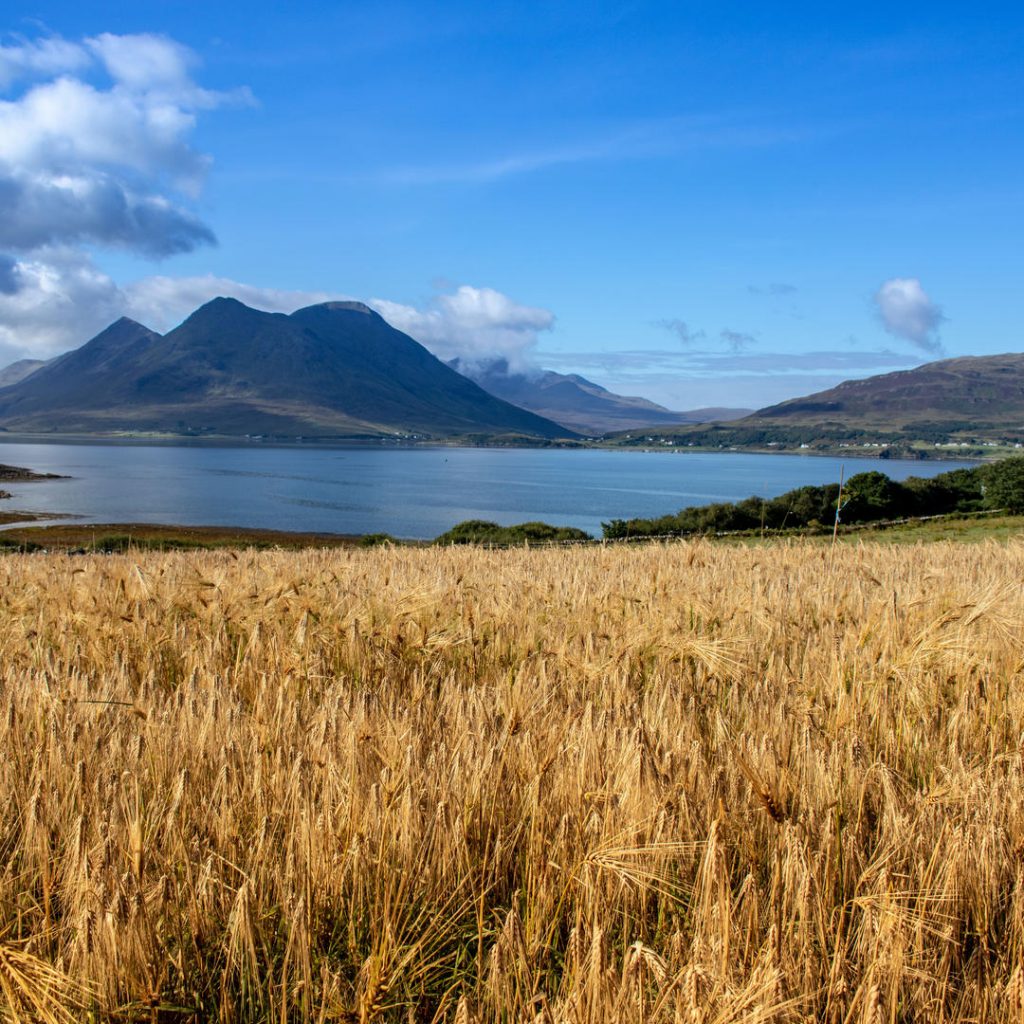The quest for flavour on the Isle of Raasay
Author: Issariya Morgan

On a remote island in the Inner Hebrides, the Isle of Raasay Distillery has been experimenting with reintroducing lost flavours into their spirits. We speak to co-founder Alasdair Day about what makes Raasay so distinctive.
A small, desolate island in the Inner Hebrides is perhaps one of the most atmospheric settings imaginable for centuries of illicit distilling. The terrain here is rugged and high-altitude: hospitable to bootleggers, inhospitable to the taxman.
But fast forward to the early 21st century, and the Isle of Raasay has proven the perfect location for a modern distillery – just as Bill Dobbie and Alasdair Day identified in 2014.
“When I first went up to Raasay, Bill had already bought Borodale House, which was a disused hotel,” Alasdair tells me over Zoom. “Standing outside and looking at the views of the sky, we realised that this was the place to build a distillery.”
Alasdair is quick to mention the Raasay’s shady history as one of the factors that drew them to the location. “Of course, there’s a history of illicit distilling here on Raasay, which reinforced the island’s whisky heritage. But to actually have a commercial distillery here would be something quite special.”
Island terrain
Once the location was decided, investigations began. “When we started looking into the feasibility of the distillery, we drilled a well and analysed the water. We found that the water levels were high, with rich minerals in the soil, which is the result of Raasay’s complex geology.
“You’ve got lots of old volcanic rock here. The highest point on the island is Dùn Can, which is basalt, and the areas surrounding the distillery are on granite soils. But the actual site where the distillery is located is comprised of ancient Jurassic sedimentary sandstone, which acts as a sponge.
“We were very fortunate with the location of our well. The rain picks up all these minerals as it runs off the volcanic rock – and it rains a lot on the west coast of Scotland. So, over hundreds of years, those minerals are absorbed in this big sponge beneath the distillery.”
The distillery well reaches 60 metres beneath the soil, which allows the team to draw up this enriched water for use in distillation, as well as cask reduction [blending the distilled alcohol with water for bottling].
“It really helps to give us a sense of place,” says Alasdair. “All of our spirits are matured on the island too, which gives them this salty note and maritime character. It’s quite moderate here in terms of temperature, and quite humid – the ideal place for making an excellent single malt Scotch whisky.”
Rediscovering lost flavours
Establishing a distillery from scratch provides endless opportunities for exploration. “We started with a blank sheet of paper, asking ourselves what style of whisky we wanted to make,” Alasdair recounts. “Being in the Inner Hebrides, we wanted to make a Hebridean single malt.”
Was there a specific flavour profile that they were after, I ask?
“When people talk about fruit in whisky, they tend to talk about apples, bananas, pears – those sorts of flavours. But if you go back to the 1970s and ’80s, there was a real blackcurrant character that has almost disappeared and is not that common anymore in whisky. We wanted blackcurrant and those kind of dark fruit flavours, in a lightly peated style.”
The team have taken their quest for flavour a step further. In 2017, they began experimenting with barley species that would be particularly well-suited to Raasay’s challenging climate – one of which was the Bere variety. Alasdair explains that Bere is a landrace species: an ancient grain variety considered to have evolved “naturally” as a result of adapting to its local environment over time.
“You could see that it was meant to grow there,” he says. “Commercial varieties can grow on Raasay, but they don’t ripen.” Bere, on the other hand, thrives happily – one of the tell-tale signs that pointed to Raasay’s illicit history.
“In time, we hope to be able to pull together all the different elements that make up and influence Scotch whisky – in particular, the Isle of Raasay’s,” he concludes.
With its unique terrain, rich island heritage and innovative mindset, who knows what this small distillery will unearth next?
Explore the Isle of Raasay’s spirits here


